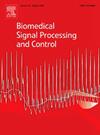GAMMIL: A graph attention-guided multi-scale fusion multiple instance learning model for the WHO grading of meningioma in whole slide images
IF 4.9
2区 医学
Q1 ENGINEERING, BIOMEDICAL
引用次数: 0
Abstract
Background and objective
The WHO grading of meningioma is closely linked to patient treatment and prognosis, making the development of an accurate deep learning model based on whole slide images (WSI) of significant clinical importance. Currently, deep learning-based multiple instance learning (MIL) often focuses on single-scale image information, which can result in information loss, or it fuses all features across different scales, potentially introducing noise from non-key regions in multi-scale images. To overcome the above limitations, we propose a novel MIL model.
Methods
In this study, we proposed a Graph Attention-guided Multi-scale fusion Mutiple-Instance Learning (GAMMIL) model. It consists of three channels: 10×, 40×, and fused. In the 40 × channel, it adaptively selects key patches, instead of all patches for information fusion, avoiding the interference of non-key regions and the waste of computing resources. Further, the graph attention-guided module extracts global information across multi-scale images for better information fusion. Finally, the fused features are used to predict the WHO grade of meningioma.
Results
A total of 428 meningioma WSIs were collected from Guizhou Provincial People’s Hospital. The experimental results demonstrate that the GAMMIL model achieved an AUC of 0.911, surpassing other state-of-the-art MIL models. Additionally, the GAMMIL model was validated on two publicly available datasets (TCGA-RCC and CAMELYON16) and a private multi-center clear cell renal cell carcinoma dataset, where it exhibited superior discriminative performance compared to other leading models.
Conclusions
The GAMMIL model effectively simulates the pathologist’s diagnostic process, showing strong classification performance across datasets. Its adaptive patch selection and multi-scale fusion offer valuable insights for cancer pathology.
求助全文
约1分钟内获得全文
求助全文
来源期刊

Biomedical Signal Processing and Control
工程技术-工程:生物医学
CiteScore
9.80
自引率
13.70%
发文量
822
审稿时长
4 months
期刊介绍:
Biomedical Signal Processing and Control aims to provide a cross-disciplinary international forum for the interchange of information on research in the measurement and analysis of signals and images in clinical medicine and the biological sciences. Emphasis is placed on contributions dealing with the practical, applications-led research on the use of methods and devices in clinical diagnosis, patient monitoring and management.
Biomedical Signal Processing and Control reflects the main areas in which these methods are being used and developed at the interface of both engineering and clinical science. The scope of the journal is defined to include relevant review papers, technical notes, short communications and letters. Tutorial papers and special issues will also be published.
 求助内容:
求助内容: 应助结果提醒方式:
应助结果提醒方式:


